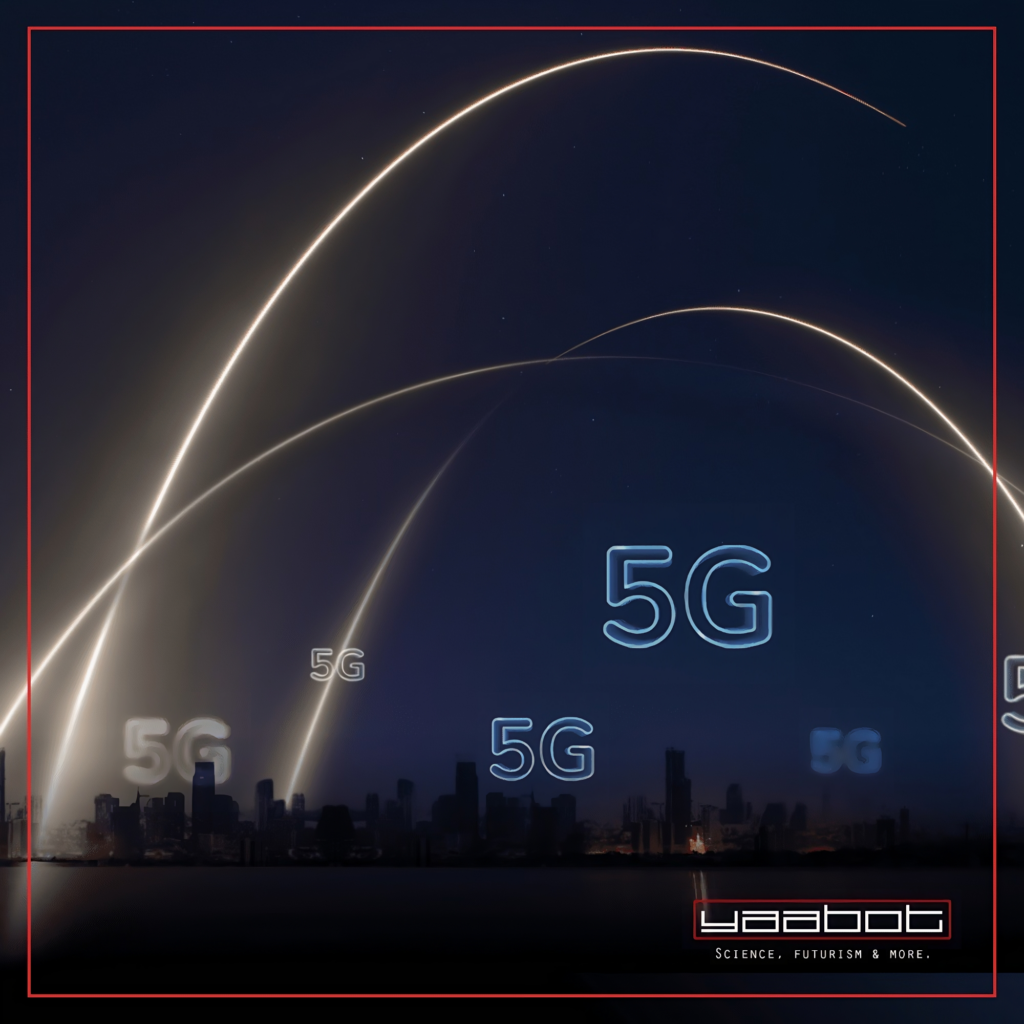The emergence of the 5G network is poised to revolutionize the way we interact with the internet and usher in a new era of internet speed and connectivity. In this blog, we will answer what 5G is exactly and delve deeper into this technology. We’ll look at the applications of 5G and understand its potential to revolutionize our digital connections.
Let’s start off by understanding – what does 5G really mean?
What Does 5G Mean?
Simply put, 5G stands for fifth-generation technology, the successor to the 4G network. It offers faster speeds than the previous generations of cellular technology. 5G has been in development for several years and is now being rolled out in many countries around the world. According to estimates, 5G connections are supposed to grow to around 6 billion by 2027.
How Does 5G Work?
5G works through a combination of advanced technologies, including radio waves, network architecture, and software. Here’s an in depth explanation of how it works:
- Radio waves: Like previous cellular technologies, 5G relies on radio waves to transmit data. However, it uses a broader spectrum of frequencies, including millimeter waves (mmWave), which can transmit data at extremely high frequencies.
- Network architecture: 5G networks are designed with a more flexible and adaptable architecture compared to previous generations. They use a combination of macrocells (large cell towers) and small cells (smaller, low-power base stations) to cover areas efficiently. Small cells, in particular, are crucial for delivering 5G’s high-speed and low-latency benefits in urban environments.
- Massive MIMO: Multiple Input, Multiple Output (MIMO) technology is used to transmit and receive multiple data streams simultaneously, improving network efficiency and capacity. Massive MIMO deploys many antennas at base stations, allowing for precise targeting of signals to individual devices.
- Software-defined networking (SDN): 5G networks are highly software-driven. SDN technology allows for dynamic network configuration, optimizing performance for different applications and devices. This enables the network to adapt to changing demands in real-time.
- Network Slicing: This allows the network to be divided into virtualized, isolated segments tailored to specific use cases. This means that different slices of the network can be optimized for various applications, such as autonomous vehicles, smart cities, or IoT devices.
5G is designed to meet the demands of an increasingly connected and data-intensive world, enabling new possibilities across various industries and applications.
4G vs 5G
The 5G network is an improved version of the 4G network. Let’s see the differences between 4G vs 5G in detail, to understand why:
- The primary 4G vs 5G difference is data transfer speed. 5G is up to 100 times faster than 4G, meaning faster downloads and uploads of large files and less lag when streaming video or playing online games.
- In addition to faster speeds, 5G also offers lower latency, which means there will be less delay in network communication. This makes real-time communication faster and more reliable, essential for applications like video conferencing, online gaming, and virtual reality.
Overall, 5G represents a significant step forward in wireless network technology, offering faster speeds, lower latency, and more reliable connectivity.
What is its Speed?
The maximum download speed achievable on a 5G network can reach up to 20 Gbps, with upload speeds reaching up to 10 Gbps. In comparison, 4G networks can only achieve a maximum speed of 1 Gbps for both downloads and uploads.
The essence of 5G lies in its capacity to offer much higher mobility speeds, approximately 10 Gbps in ideal conditions. However, achieving such speeds depends on various factors, including the deployment of specific frequency bands, such as band n78 at 3.5 GHz, and the overall network infrastructure in a given location.
The overall 5G experience is not just about speed but also includes aspects like lower latency and the ability to connect more devices simultaneously.
Countries With The Fastest 5G Speeds
As for the countries with the fastest 5G networks, South Korea and Singapore are at the forefront. In South Korea, the average 5G download speeds are the fastest in the world, reaching 432.5 Mbps, followed closely by Singapore with 376.8 Mbps.
Other countries like Brazil and Malaysia also feature high average 5G speeds, with Brazil at 346.4 Mbps and Malaysia at 322.7 Mbps. These speeds significantly exceed those offered by 4G networks, often being three to six times faster, and in some cases, even more than ten times as fast.
Advantages
The advantages of this network are innumerable, let’s look at some of them:
- Faster data transfer rates: 5G technology can handle data transfer rates with peaks reaching several gigabits per second, about 100 times faster than 4G. This speed is expected to improve the transmission of data-intensive tasks like virtual reality, remote surgeries, and driverless cars.
- Lower latency: Another benefit is lower latency, or the delay between when data is sent and received by a device on the network. 5G networks offer reduced latency of less than one millisecond, compared to 4G, which can have latency up to ten times higher. This reduction in latency means that users can enjoy seamless and speedy internet browsing and live streaming, among other benefits.
- Enhanced network capacity: This network is designed to handle vast amounts of data, which means it can handle more devices connecting to the network simultaneously. The new technology’s massive capacity can help ensure that there are fewer network congestion and faster network speeds for all users.
5G’s Impact on Connectivity
5G offers a better user experience with reliable connectivity that has several essential benefits.
- Improved coverage and signal strength: The 5G network offers better coverage, even in rural areas, which is an area not previously reachable with previous generations of cellular technology. This is achieved through a combination of lower-frequency bands and the use of small cells, which increases the network density and coverage. This improvement in coverage is a boon for industries that have previously struggled with connectivity issues, including disaster relief efforts and businesses in remote areas.
- Connecting more devices simultaneously: This network is designed to connect more devices to the internet simultaneously. It achieves this by increasing the number of small cells in a particular area, increasing the network density, thus, providing faster speeds and improved connectivity for all devices connected to the network.
- Supporting the Internet of Things (IoT): The massive capacity of the 5G network to handle multiple devices simultaneously makes it the ideal technology for IoT. IoT devices require reliable and fast connectivity, which this network provides. The ability of these devices to collect and transmit data could revolutionize multiple industries, including transportation, healthcare, and smart cities.
Real-World Applications of 5G
5G is poised to have a significant impact on different industries, from healthcare to transportation. Let’s look at some of the applications of the 5G internet:
- Smart cities and infrastructure: This network can help create smart cities where traffic lights, public transit systems, and other infrastructure can be connected to the internet and operate seamlessly. It has the potential to change the way we build, operate and maintain our cities, making them more efficient, sustainable and responsive to the needs of the population.
- Telemedicine and healthcare: 5G enables remote medical procedures and diagnoses by providing lightning-fast transmission of data. This can enable remote surgeries, video consultations, and remote consultations with external medical professionals regardless of location. The implications of this could help to save lives by providing timely care, especially in rural areas, where access to healthcare services is limited.
- Autonomous vehicles and transportation: The low latency and high speeds provided by 5G can help create an environment that allows for safe and efficient autonomous vehicle usage. The network speed ensures that data can be transferred seamlessly, providing real-time safety updates and faster decision-making processes.
Final Thoughts
Overall, 5G technology is poised to revolutionize the internet’s speed and connectivity, leading to better user experiences and a more connected world. Its applications are numerous, and its potential to change the way we live and work is profound.
Yaabot is your source for the latest news and insights on technology, AI, and more.
Frequently Asked Questions (FAQs)
- Is 5G worth it?
The worth of 5G depends on your needs. If you require faster speeds, lower latency, and better connectivity for activities like streaming, gaming, or IoT, it can be worthwhile. Assess your specific requirements and the availability of this network in your area before deciding.
- What is 5G speed?
5G speeds range from 100 Mbps to several Gbps. Sub-6 GHz 5G offers 100-300 Mbps, while mmWave 5G can exceed 1 Gbps, reaching up to 10 Gbps. Actual speed depends on proximity to towers, network congestion, and device capabilities.
- What is a 5G WiFi?
5G Wi-Fi refers to Wi-Fi 6 (802.11ax), not 5G cellular. Wi-Fi 6 provides faster speeds (up to 9.6 Gbps), improved capacity and better performance in crowded areas.
- What is 5G networking?
5G networking refers to the fifth-generation cellular technology. It offers significantly faster speeds, lower latency, and greater connectivity than previous generations. It uses millimeter waves and advanced network architecture to achieve these improvements.
- When will 5G come out?
As of the latest information, its deployment is ongoing worldwide. The growth in 5G connections is rapid, with expectations of reaching 5.9 billion by the end of 2027.
- What does 5G stand for?
5G means “fifth-generation,” indicating the next evolution in wireless technology. It succeeds the fourth-generation (4G) network and represents an advancement in speed, connectivity, and network capabilities.


